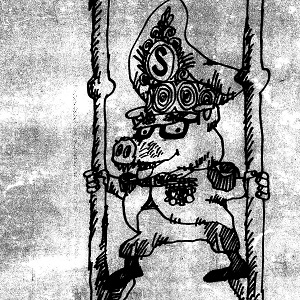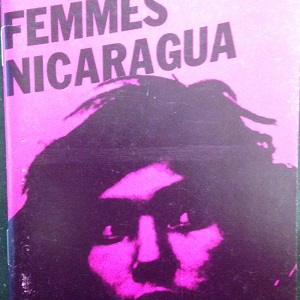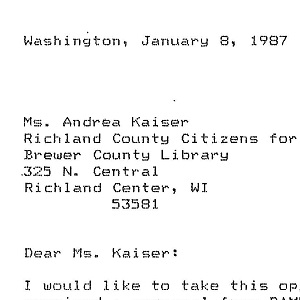Short Teaching Module: Transnational Connections and the Long Cold War in Nicaragua
Overview
A strength of teaching from a transnational perspective is that it forces us to reorient our viewpoint and consider new approaches to our subjects. This is particularly true when looking at modern Latin American history. New transnational approaches have helped me develop a more nuanced curriculum that looks at diplomacy outside the traditional avenues of power and expands the timeframe of the Cold War. This is an approach that I utilize in my own scholarship on U.S./Nicaraguan relations in the twentieth century and have incorporated into my world history curriculum, pushing me to take a deeper look at marginalized voices in world politics and reexamine the ways in which we periodize history. This module uses three sources from Nicaraguan organizations that challenged U.S. policy in Central America in the 1970s and 1980s to examine transnational connections they helped create.
Essay
As a scholar and teacher of modern Latin American history, I find the concept of “Latin America’s Long Cold War” to be a useful framework that informs my teaching and scholarship. This historical paradigm, outlined by scholars Greg Grandin and Gilbert M. Joseph, looks to expand our physical and temporal categorizations of the Cold War in Latin America. They first argue that those who study the history of foreign relations in Latin America need to look beyond the histories of the state and its apparatus. They propose that there is much to learn from discussions of how historical subjects operated between or across national boundaries.
In 1979, the Sandinista National Liberation Front (Frente Sandinista de Liberación Nacional, FSLN), a leftist revolutionary movement, overthrew Nicaragua’s U.S.-supported dictatorship and took power in the country. The United States and its right-wing allies in Latin America quickly moved to oust the Sandinistas, creating a counterrevolutionary movement bent on removing the FSLN from power. In response, a robust anti-war movement opposed to U.S. intervention in Nicaragua grew in the United States and Europe. When examining the anti-Contra War activism of the 1980s, I document how the organizations in those movements operated on an international scale, connecting with and building relationships with similar groups in Central America and Europe. Those transnational connections were vital to the effort of challenging U.S. policy in Central America. Discussing these solidarity organizations in a strictly national context would fail to fully capture the significance of transnational cooperation to the anti-Contra War movement.
When thinking about transnational approaches, the example of anti-Contra War organizations asks us to take into consideration another aspect of the “Latin America’s Long Cold War” paradigm: the foreign policies of those on the periphery of the traditional foreign policy apparatus. Scholarship in the field of diplomatic history has historically been limited to those policymakers who operate with the authority of the state (e.g. politicians, diplomats, military officials). However, thinking transnationally asks us to consider the foreign policies of those who act without the authority of the state or in opposition to it. North American anti-Contra War activists developed close ties with members of the Sandinista government in Nicaragua and peace activists in Europe, creating a grassroots foreign policy that challenged the official policies of the U.S. government. This transnational, bottom-up foreign policy was one of the key factors that limited the Reagan administration’s ability to support the Contras, leading to the Iran-Contra Affair. By examining peripheral foreign policies, we are able to see the ways in which ordinary people impact the course of significant world events.
The final transnational component of Grandin and Gilbert’s paradigm asks us to take a step back and reexamine how we periodize history. Emphasizing specific historical time periods often reinforces certain national histories. How we chronologically frame the Cold War is a good example of this. The 1945-1990 framework fixes the narrative in the bipolar struggle between the United States and the Soviet Union, subsequently tying this global history to the national narratives of the two superpowers. In Latin America, the 1945-1990 framework is imperfect and splits trends that straddle this periodization. In the context of the long history of U.S. intervention in Nicaragua, this emphasis on a division that favors U.S. history bifurcates Nicaragua’s century-long anti-imperialist struggle. Augusto Sandino’s resistance to U.S. occupation in the 1920s is categorized as being essentially different from the leftist Sandinista National Liberation Front’s struggle against the U.S.-supported dictatorship a half-century later. By emphasizing a historical division that favors narratives outside the superpower binary, we can bring the two halves of Nicaragua’s resistance to U.S. intervention into a conversation and understand them as the continuation of a century’s-long anti-imperialist struggle.
I have found that the various components of this framework have a real value beyond discussions of Latin American history. In a world history course, thinking transnationally might seem obvious. Of course, you would discuss the international connections between different groups. However, it is easy to fall into a trap of teaching a constellation of national histories disconnected from each other. Therefore, one needs to be intentional about incorporating topics that bridge national or regional (if you are teaching a topic before the era of the state) boundaries. Histories that emphasize multiple regions and examine topics like trade routes, migration patterns, and/or the spread of religions are a great means of incorporating transnational thinking into your classroom.
Working to be more inclusive in the context of a world history course is an exercise that requires you to think about both marginalized voices and peripheral histories. Marginalized voices are the histories of people who are excluded from or minimized in traditional historical narratives. These are groups understood as existing outside traditional avenues of power and, because of their gender, sexuality, race, or class identity, are often excluded from historical narratives. Peripheral histories are narratives that privilege one historical narrative over another and impose limiting or problematic frameworks. For example, a traditional world history curriculum is taught from the perspective of the West, emphasizing events and peoples in European history. Those outside the European political sphere, like China or India, only have passing roles in the narrative and, if they are included, they are often the objects of Western actions instead of being portrayed as having agency in their own right. Thinking about marginalization at both the micro and macro levels helps us create more inclusive curriculums that help us move beyond limiting paradigms.
Incorporating marginalized voices and peripheral histories lends itself nicely to examinations of periodization. The fall of Rome, the European discovery of the Americas, the Enlightenment, the Industrial Revolution, and the Cold War are all used as delineating markers that tend to structure our world history courses. These events are largely grounded in the history of Europe with non-European peoples largely operating on the periphery. Unfortunately, this can reinforce a Eurocentric worldview. Taking a more transnational approach demonstrates how Europe was part of a global system shaped by the confluence of larger economic, environmental, and cultural systems.
Thinking transnationally about history is a valuable skill for those teaching and researching both big histories and specialized subjects. It forces us to think bigger and expand the cast of actors in our narratives. It asks us to reexamine the ways in which we conceptualize history and the paradigms that we use, in the process helping us produce histories that better reflect the diversity around us.
Primary Sources
Bibliography
Gilbert M. Joseph, “Border Crossings and the Remaking of Latin American Cold War Studies,” Cold War History 19 (1): 141–70.
Greg Grandin, “Living in Revolutionary Time: Coming to Terms with the Violence of Latin America’s Long Cold War,” in A Century of Revolution: Insurgent and Counterinsurgent Violence during Latin America’s Long Cold War, ed. Greg Grandin and Gilbert M. Joseph (Durham: Duke University Press, 2010), 1-42.
Roger Peace, A Call to Conscience: The Anti-Contra War Campaign (Amherst: University of Massachusetts Press, 2012).
Héctor J. Perla, “Heirs of Sandino: The Nicaraguan Revolution and the U.S.-Nicaragua Solidarity Movement,” Latin American Perspectives, Vol. 36 No. 6 (November 2009).
Thomas Walker and Christine J. Wade, Nicaragua: Living in the Shadow of the Eagle (Boulder: Westview Press, 2011).
Credits
Andrew Wilson is a teaching associate at the University of Illinois at Urbana-Champaign’s Laboratory High School. He received his Ph.D. from the University of Nebraska-Lincoln, where he taught courses on U.S. and Latin American history. He currently teaches courses on world history and the digital humanities. His manuscript is a transnational history of the Long Cold War in Nicaragua that examines the global linkages of Nicaragua’s revolutionary and counterrevolutionary factions.


